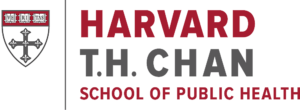Zachary Nagel, PhD
Assistant Professor of Radiation Biology
Harvard T.H. Chan School of Public Health
My research is focused on the underlying mechanisms by which cells resist killing by DNA damaging agents. This work draws from my graduate training in chemistry under Prof. Judith Klinman, which focused on the structural, chemical and biophysical underpinnings of enzyme catalysis at UC Berkeley. My graduate work resulted in several high-profile publications and two reviews that have been cited > 100 times, and my background in chemistry continues to inform current research into the mechanisms of DNA damage and repair. As a postdoctoral research associate at MIT in the Department of Biological Engineering, I worked with Prof. Leona Samson to study the role of DNA repair capacity in multiple pathways in determining how cells respond to DNA damaging agents. This work provided the experimental foundation for my current work. DNA repair capacity studies have been severely limited because the available functional assays are labor intensive and require different procedures for each repair pathway. To overcome this obstacle, I developed high throughput fluorescence multiplex host cell reactivation (FM-HCR) assays that measure DNA repair capacity in multiple pathways (PNAS 111, E1823-E1832). These broadly applicable assays provide a functional, cell-based dimension that complements powerful omics approaches and other functional analyses for studying the critically important process of DNA repair in human health. My laboratory is particularly interested in how DNA repair capacity impacts cellular function and sensitivity to killing by radiation, alkylating agents, and other therapeutic DNA damaging agents. Even as cancer treatment advances beyond the scope of DNA damaging agents, the fundamental pathways governing genome integrity remain at the heart of understanding cancer etiology, evolution, and response to therapy. For example, in the context of immune checkpoint blockade, the importance of mutation burdens underscores the need to understand how DNA damage is repaired and tolerated in cancer cells. And for many cancers DNA damaging agents remain the centerpiece of frontline therapy. By measuring DNA repair in cancer cells, we seek to understand the mechanisms linking these pathways to drug resistance, and to identify new personalized strategies for patient selection and treatment. This collaborative project will advance these goals by continuing a longstanding collaboration with Dr. John Tainer and the larger SBDR group that fuses expertise in structural biology and molecular mechanisms with my areas of strength in measuring and modeling DNA repair as it relates to therapeutic responses in cancer. This large and interdisciplinary project also builds upon a central theme in my research, which is to collaborate across disciplines to maximize the potential for reducing the burden of cancer.

